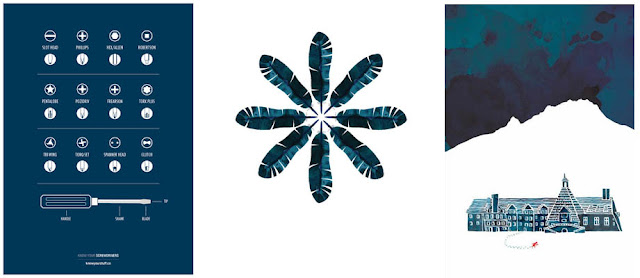Monday, 14 December 2015
Introducing Metal from KIN: Paper | Metal | Clay
Monday, 7 December 2015
Saturday, 5 December 2015
New KIN
_____
Lift the bowl
from the bottom shelf
and hold it
in both hands. Cup
the bowl. Let your palms
feel its weight. Wonder (...)
- Melissa Butler
from the bottom shelf
and hold it
in both hands. Cup
the bowl. Let your palms
feel its weight. Wonder (...)
- Melissa Butler
After six years of providing a platform to South African design, I felt my focus shift.
Locally manufactured was always integral to KIN; it was the first criteria of all objects in our bricks and mortar pop-ups, and then in our stores and then online.
Another was our love for the object and our devotion to the story around the object.
I believe that our focus on ethical manufacturing can now take flight and go beyond our previous bricks and mortar bound existence
KIN’s focus remains very simple. But now, through our most beloved materials of paper, metal and clay, I will be focusing on:
Place: KIN's heart is in locally manufactured design
Meaning: KIN is the story of where an object comes from and where it will go
Craftsmanship: KIN is well made and made to last. Period.
Place: KIN's heart is in locally manufactured design
Meaning: KIN is the story of where an object comes from and where it will go
Craftsmanship: KIN is well made and made to last. Period.
To find Melissa Butler's book of poetry 'Removing', I order my copies from my favourite Cape Town bookstore, The Book Lounge.
Thursday, 3 December 2015
Time Loops
As we planned for the exhibition Our Fathers, Kirsty Cockerill, director of the AVA at the time, and I sought to find artists dealing with the concept of fatherhood. With this in mind, I attended the Michaelis Graduate exhibition and visited the work of a young artist, David Brits.
David's exhibition centred on his father and was entitled Vaderland. It felt that, like me, David was battling with the concept of the father and the many faces the father wears. How does one reconcile the loving father with the warring father? Is it possible to forgive the ever-absent father?
The questions I asked about the two aspects were not answered in David's work, but they unravelled - visually. I immediately included some of his works in Our Fathers.
This looking at the father figure has continued through the years as investigation in both Victor Victor and 1969, and now as a memorial in Snake Man. I stood in the gallery and followed the curves and movements of the black line in David's linocuts.
And it seems that David and I have aligned again.
My grandfather was my greatest male ally in the world and although he passed two decades ago, the closeness and safety of the relationship is a touchstone. So it is with a great deal of reverence that I approached the work David describes as "a love letter from me to him, from a grandson to a grandfather, a final farewell from the here-now to the here-after; a meditation on paternal love".
It was not the portraits from newspaper clippings capturing John Wood's smile and his deft handling of the snakes that made my heart stop; it was these loops.
The echoing and winding of them, the mirror of the loops to each other, in the same way that we are mirrors of each other.
Grandfather to father to son.
Each, hopefully, a better loop than the one from whence we came.
For more images and David's statement, please visit David's website and the beautiful gallery, SMITH studio.
David's exhibition centred on his father and was entitled Vaderland. It felt that, like me, David was battling with the concept of the father and the many faces the father wears. How does one reconcile the loving father with the warring father? Is it possible to forgive the ever-absent father?
The questions I asked about the two aspects were not answered in David's work, but they unravelled - visually. I immediately included some of his works in Our Fathers.
This looking at the father figure has continued through the years as investigation in both Victor Victor and 1969, and now as a memorial in Snake Man. I stood in the gallery and followed the curves and movements of the black line in David's linocuts.
And it seems that David and I have aligned again.
My grandfather was my greatest male ally in the world and although he passed two decades ago, the closeness and safety of the relationship is a touchstone. So it is with a great deal of reverence that I approached the work David describes as "a love letter from me to him, from a grandson to a grandfather, a final farewell from the here-now to the here-after; a meditation on paternal love".
It was not the portraits from newspaper clippings capturing John Wood's smile and his deft handling of the snakes that made my heart stop; it was these loops.
The echoing and winding of them, the mirror of the loops to each other, in the same way that we are mirrors of each other.
Grandfather to father to son.
Each, hopefully, a better loop than the one from whence we came.
For more images and David's statement, please visit David's website and the beautiful gallery, SMITH studio.
Subscribe to:
Comments (Atom)

































